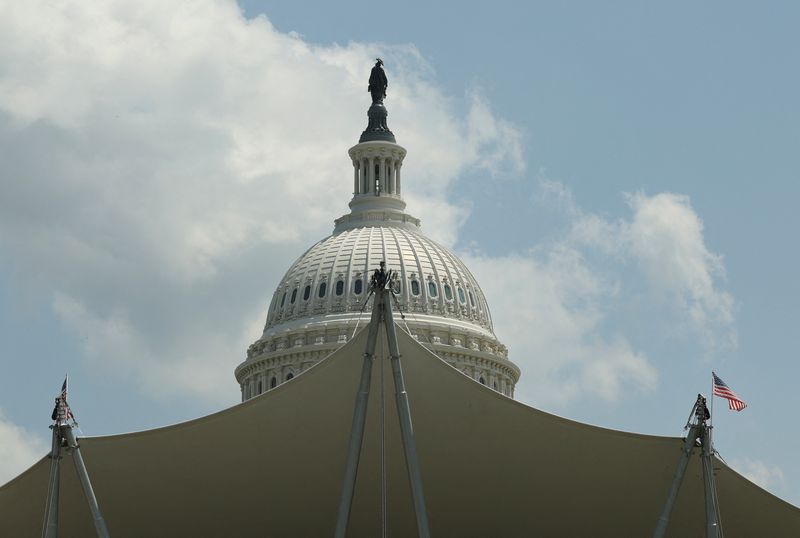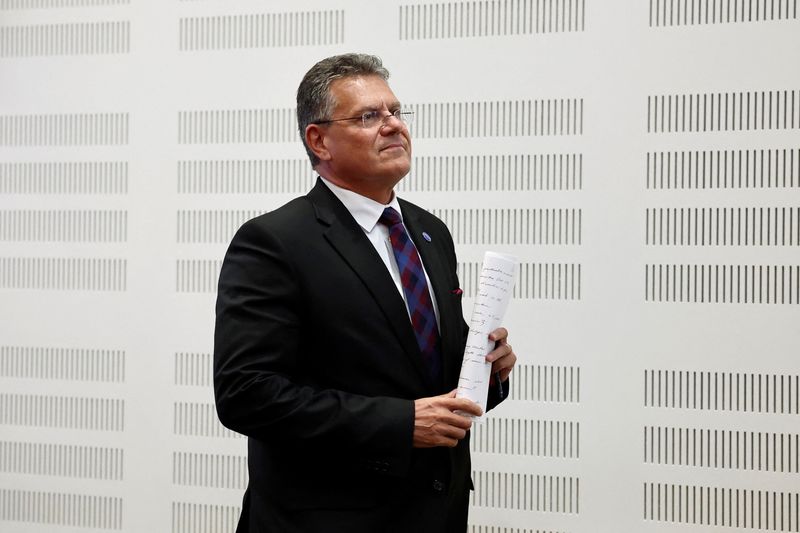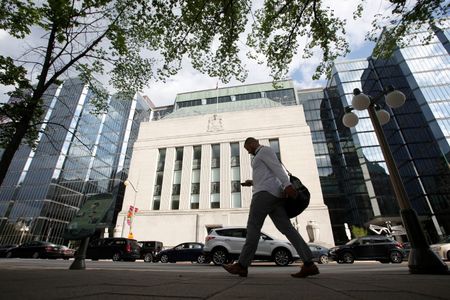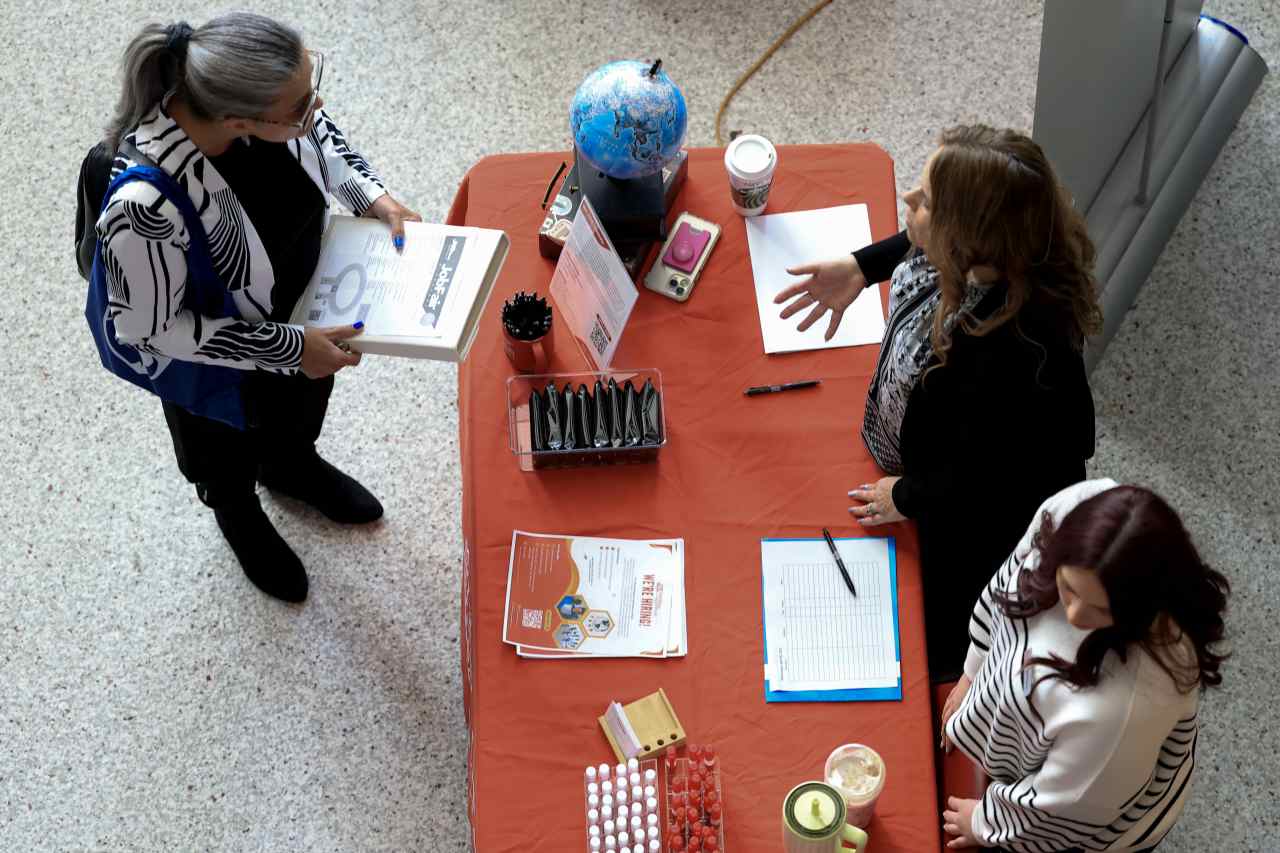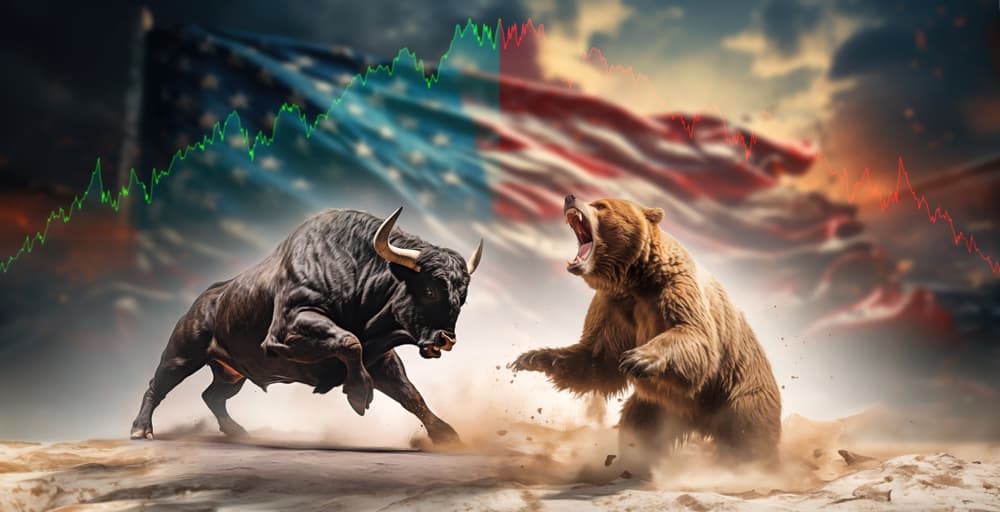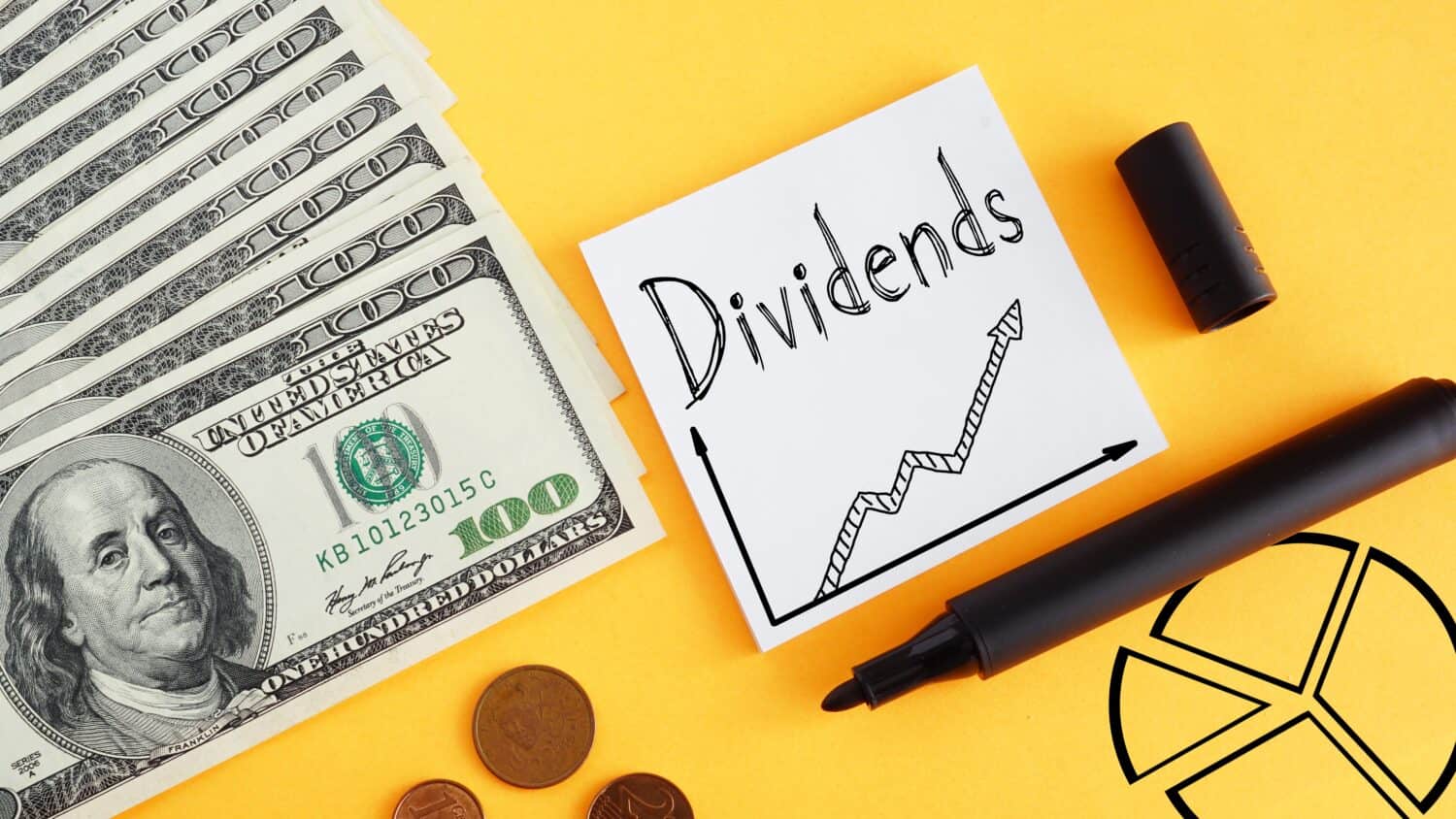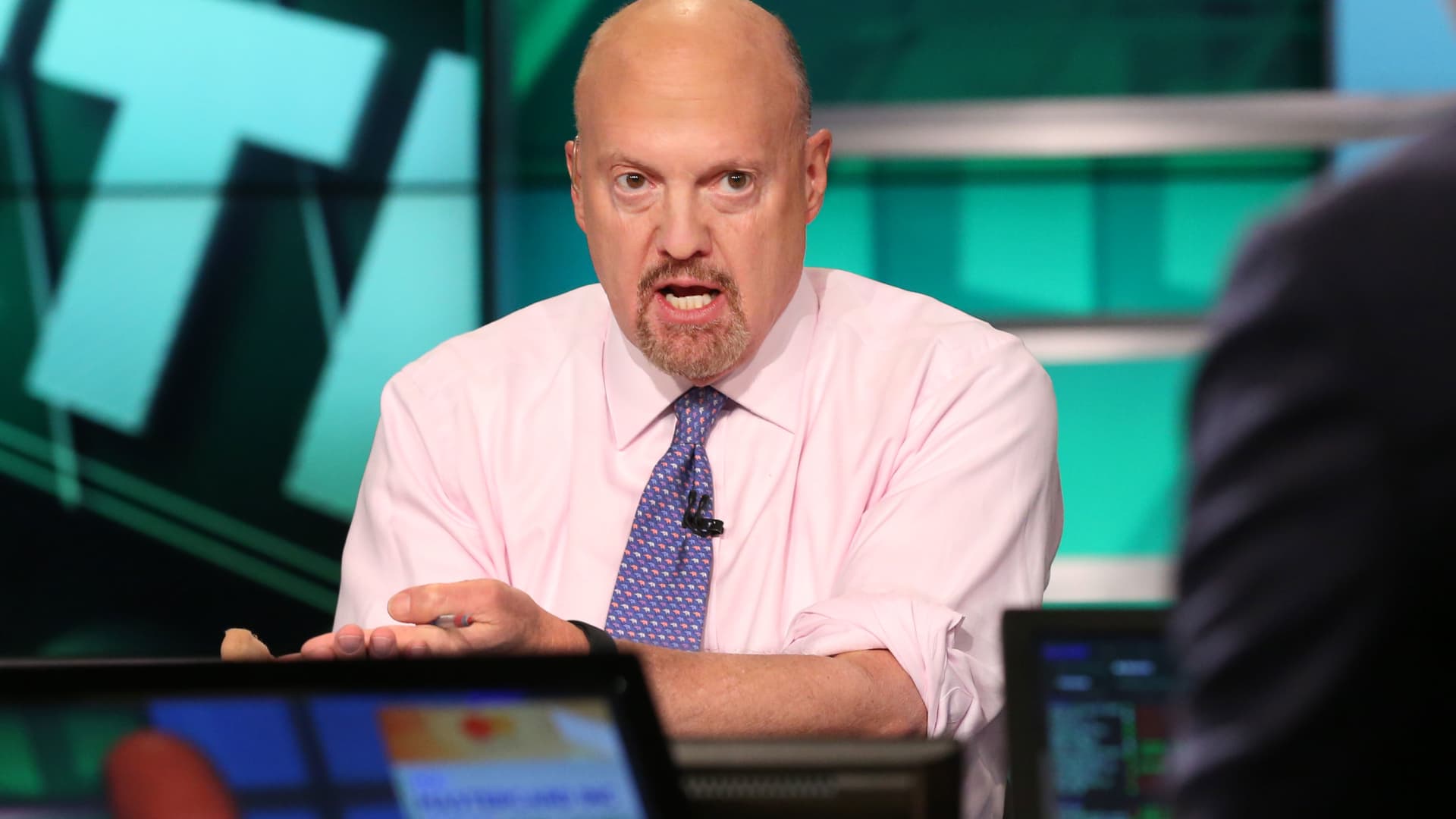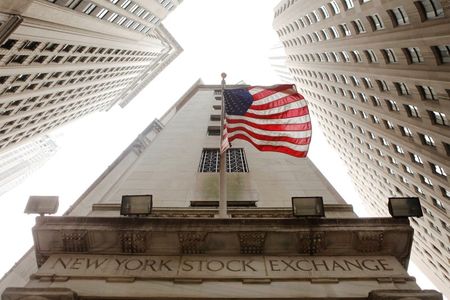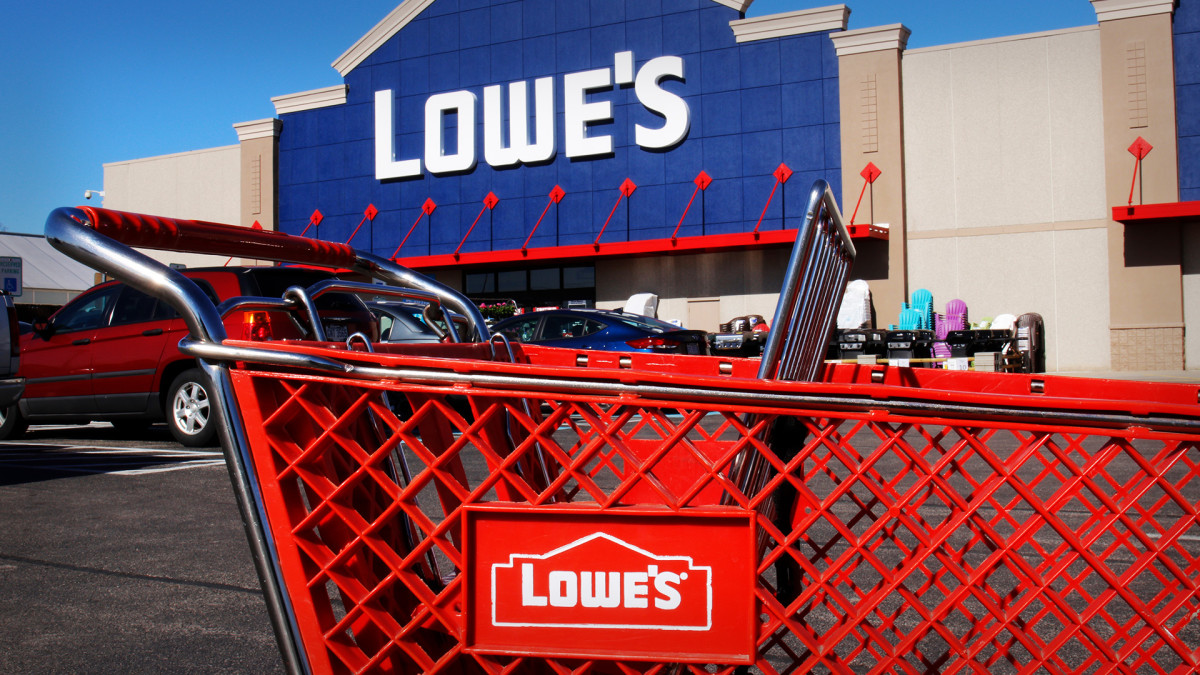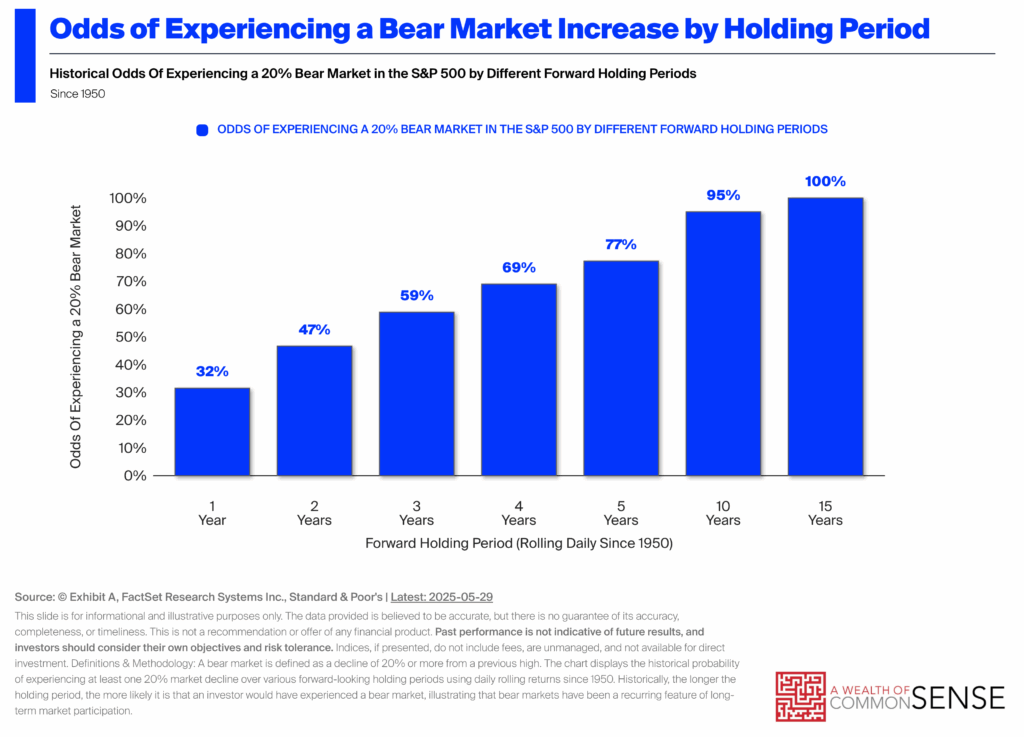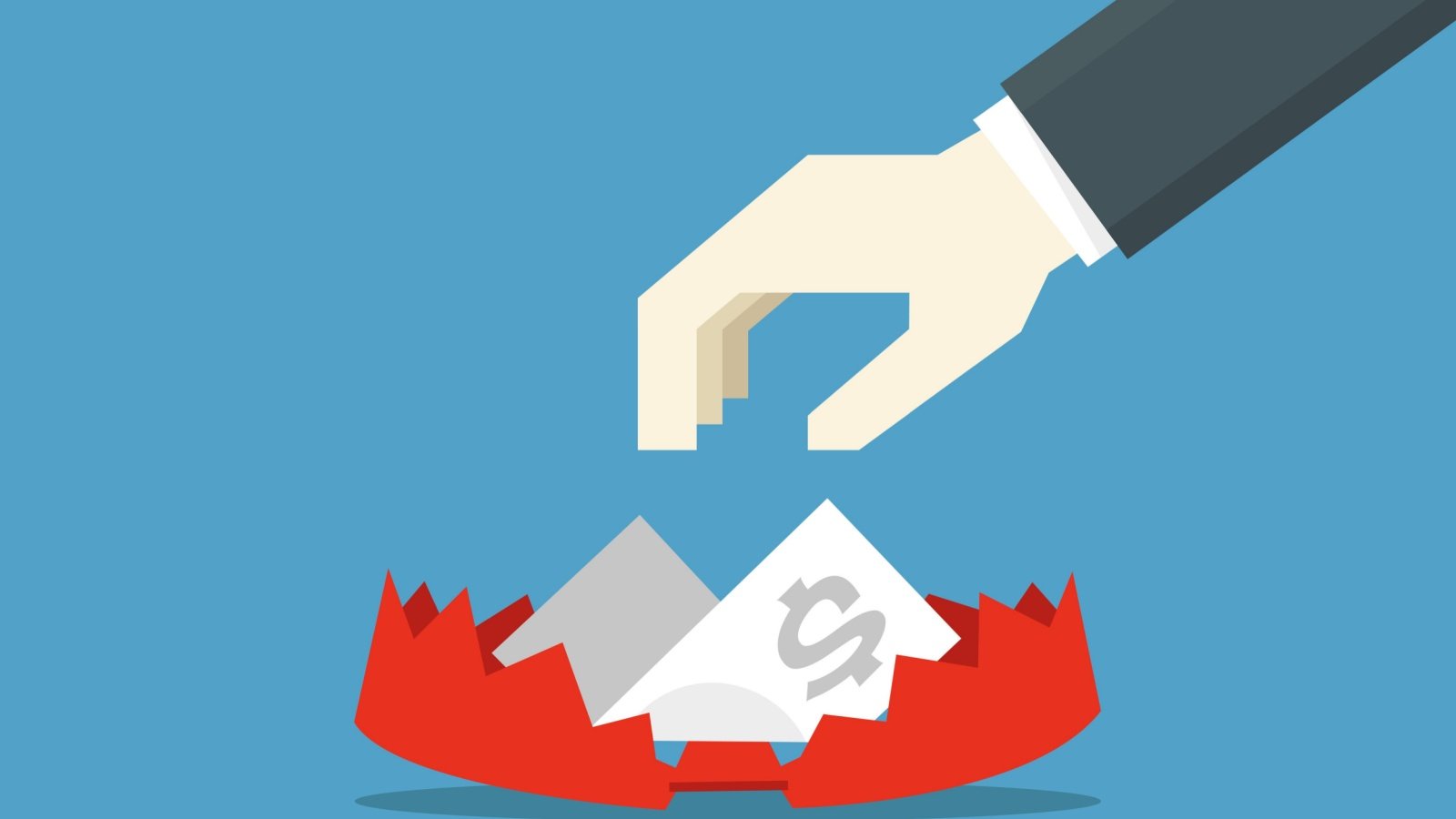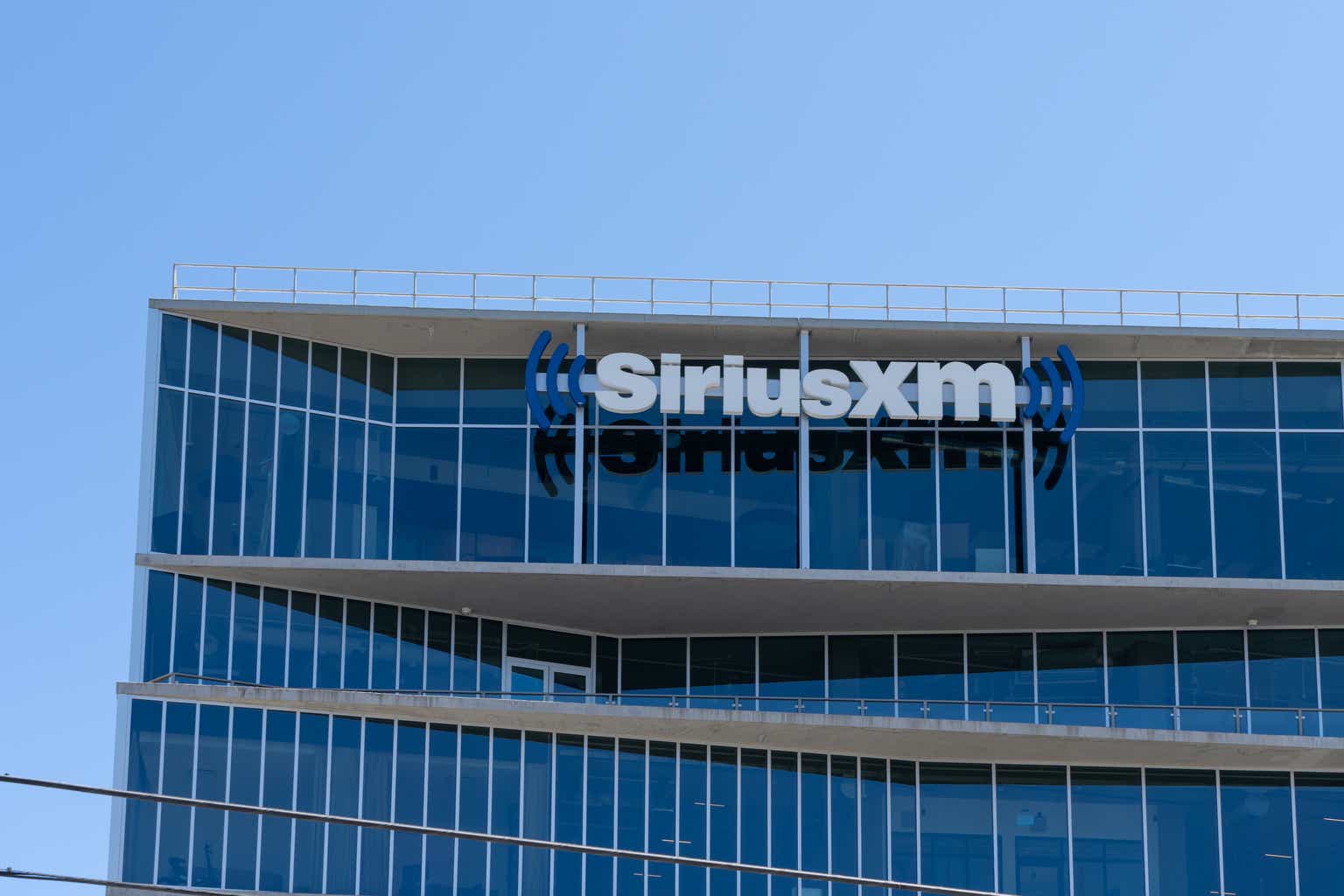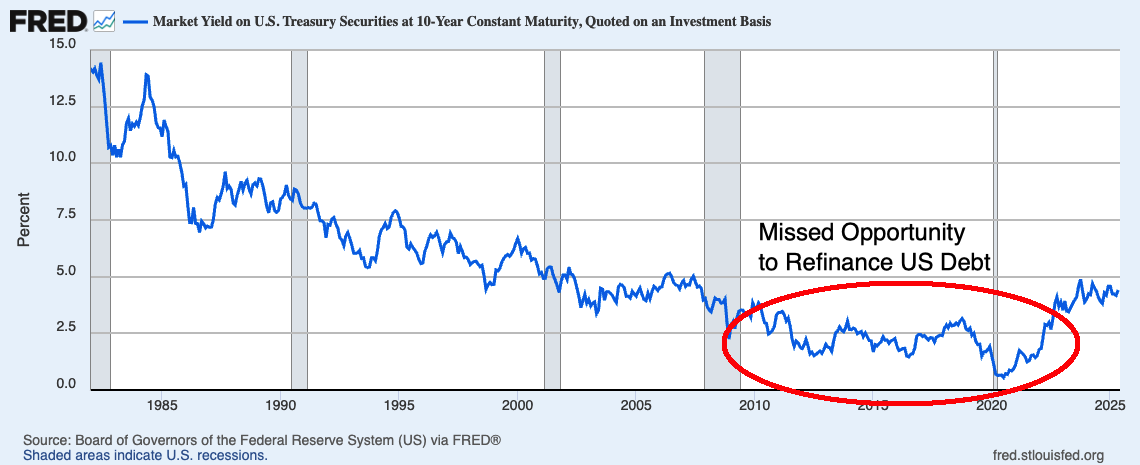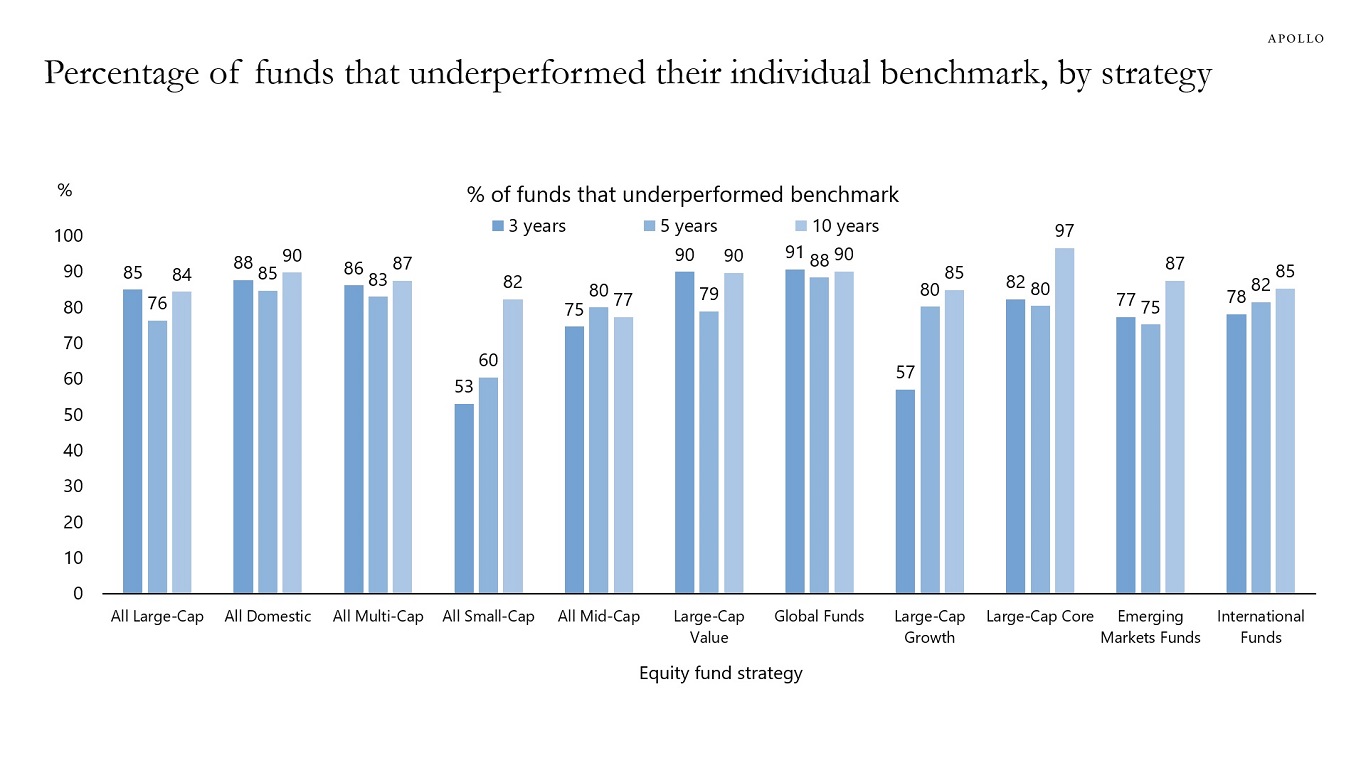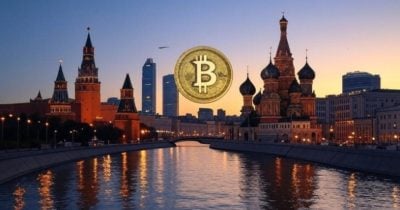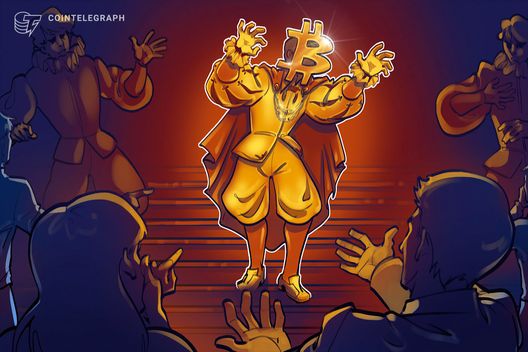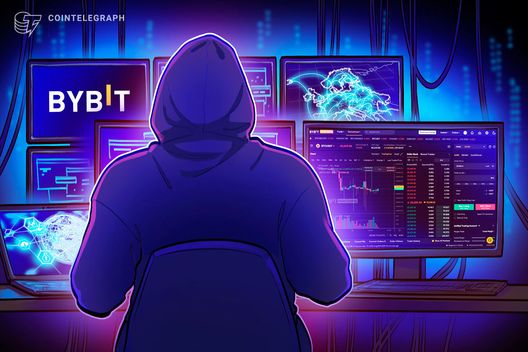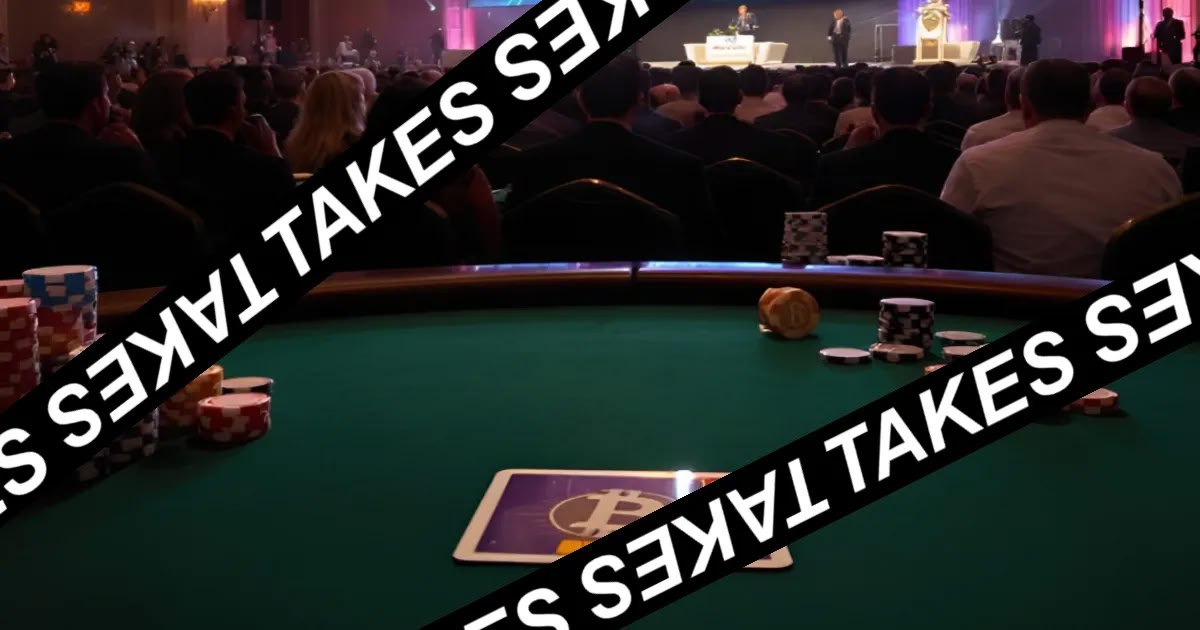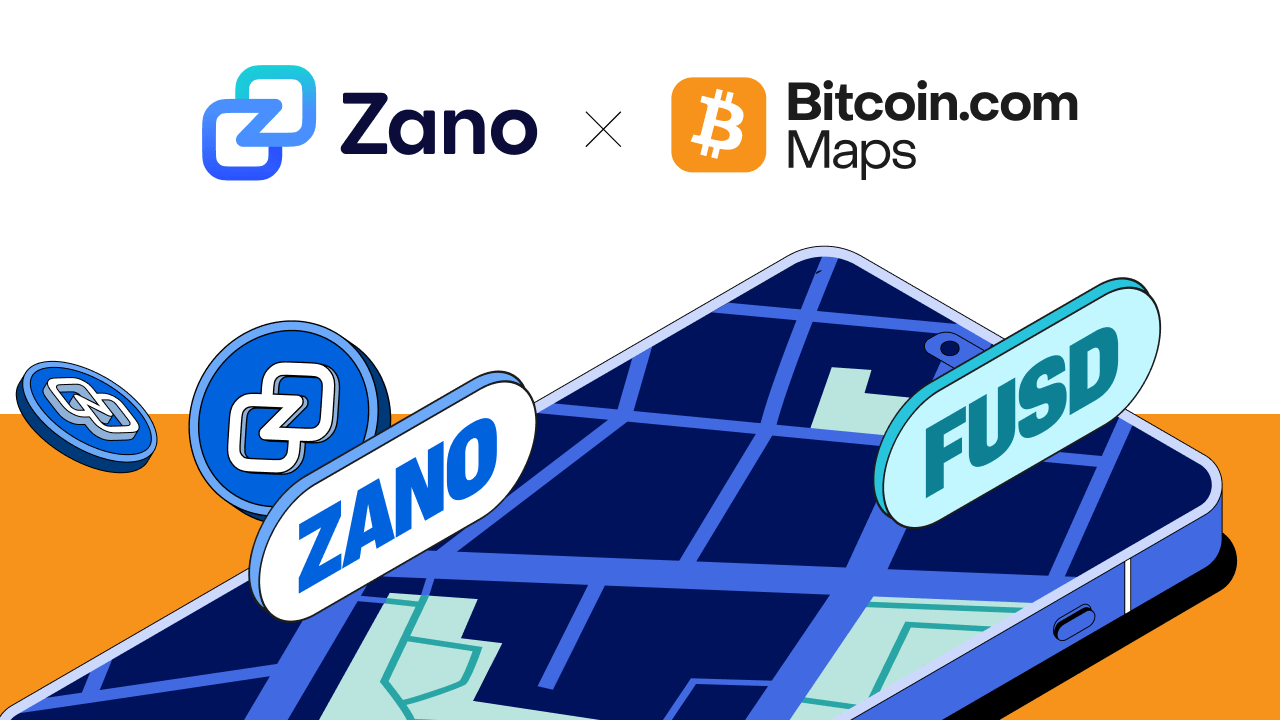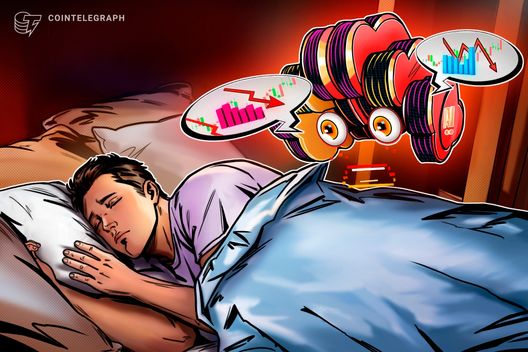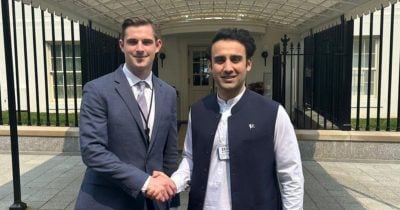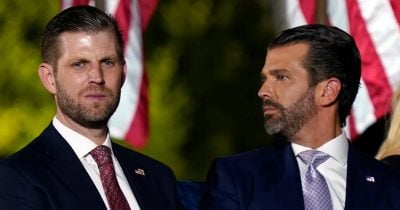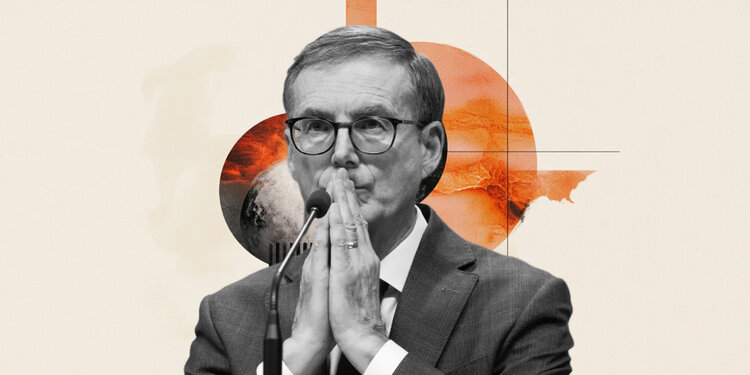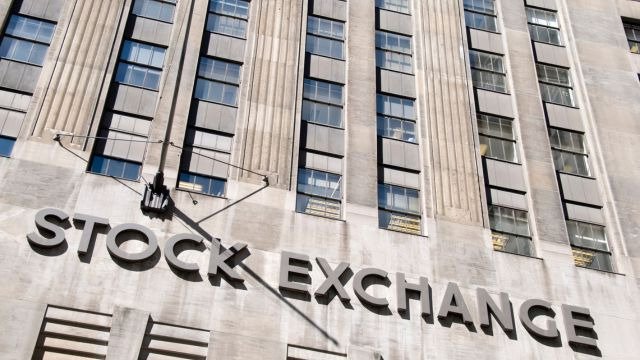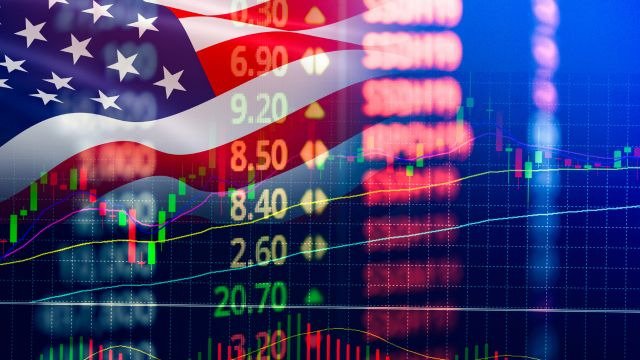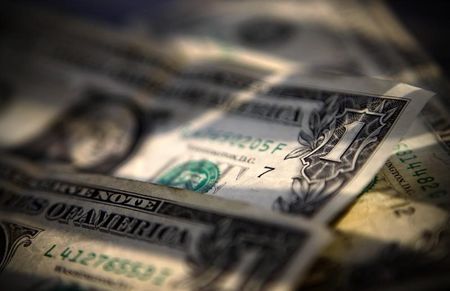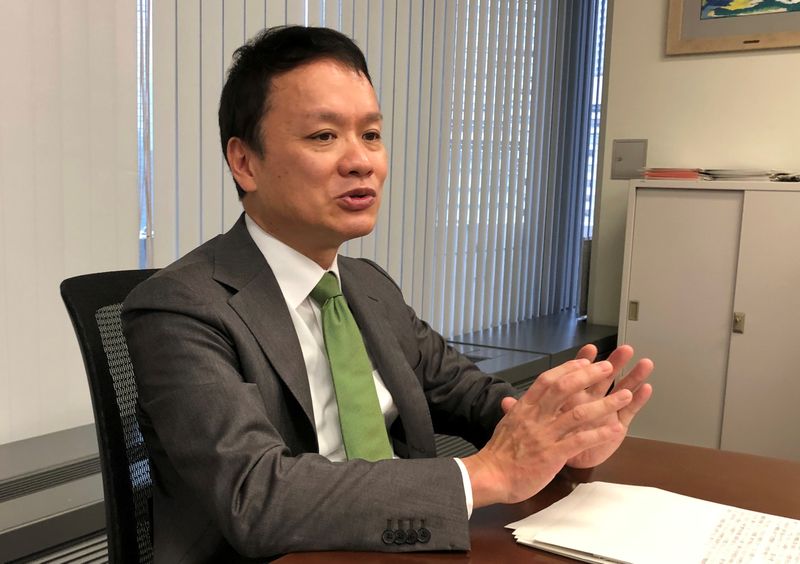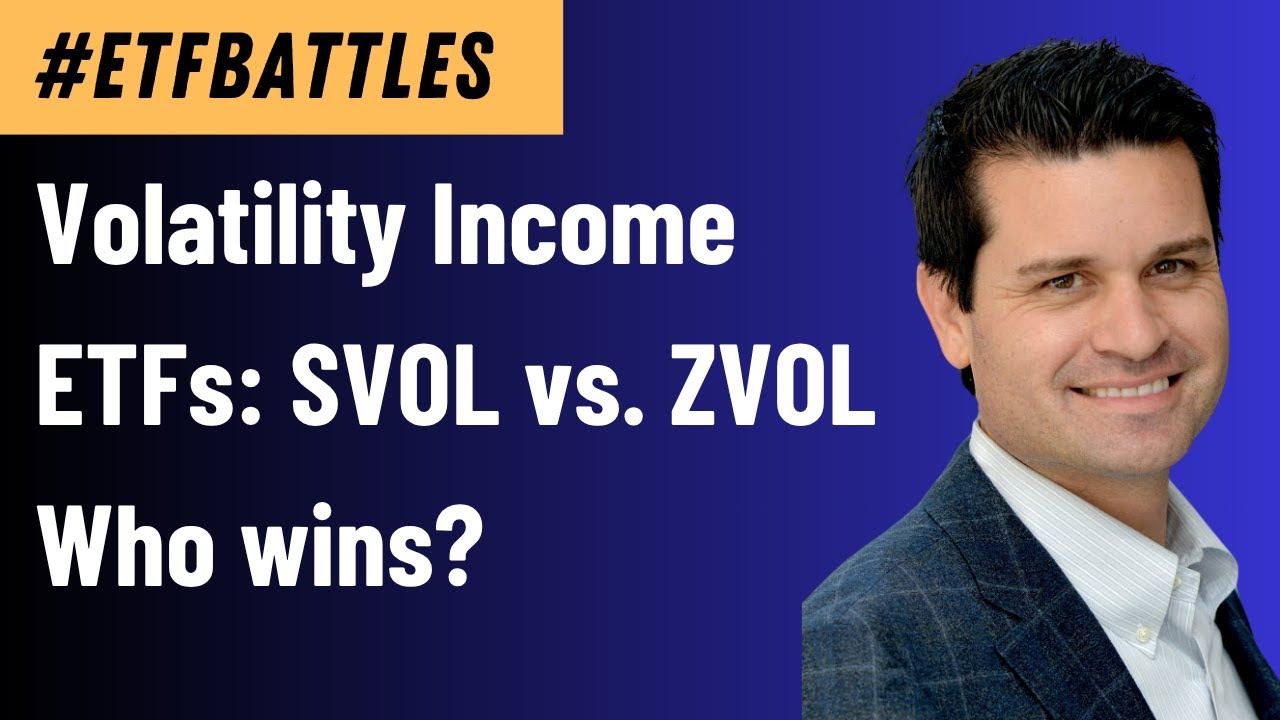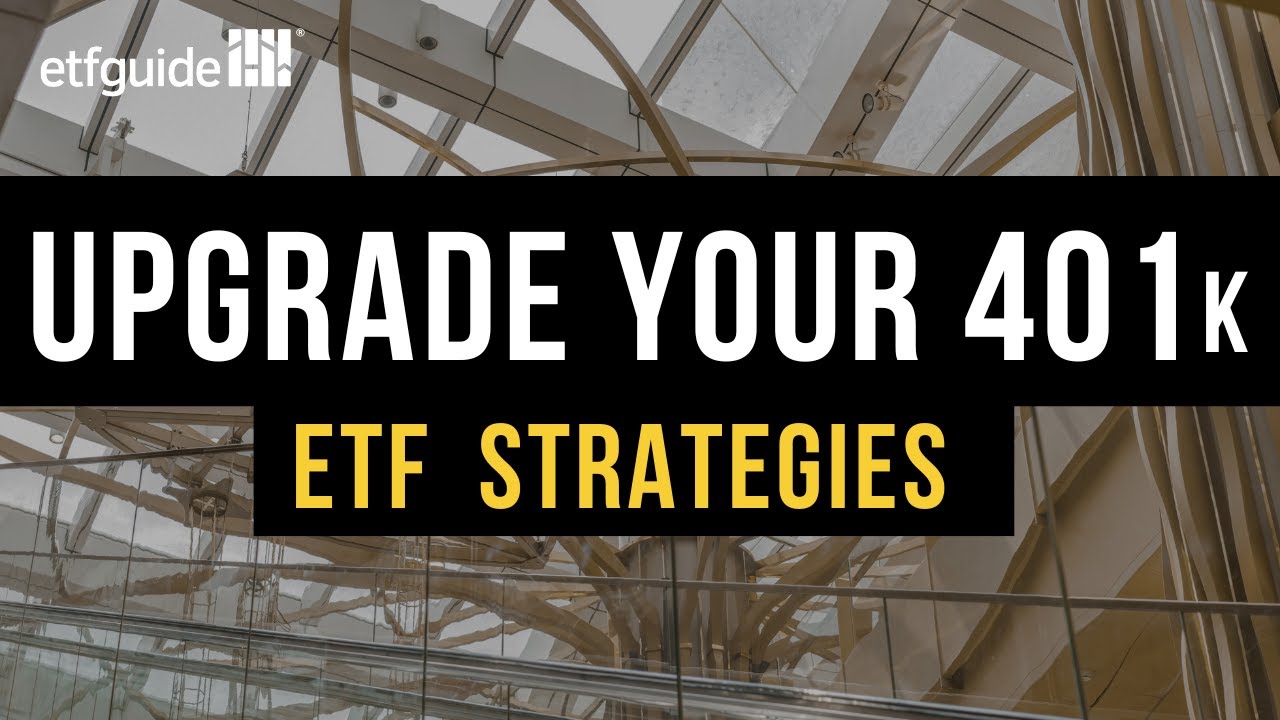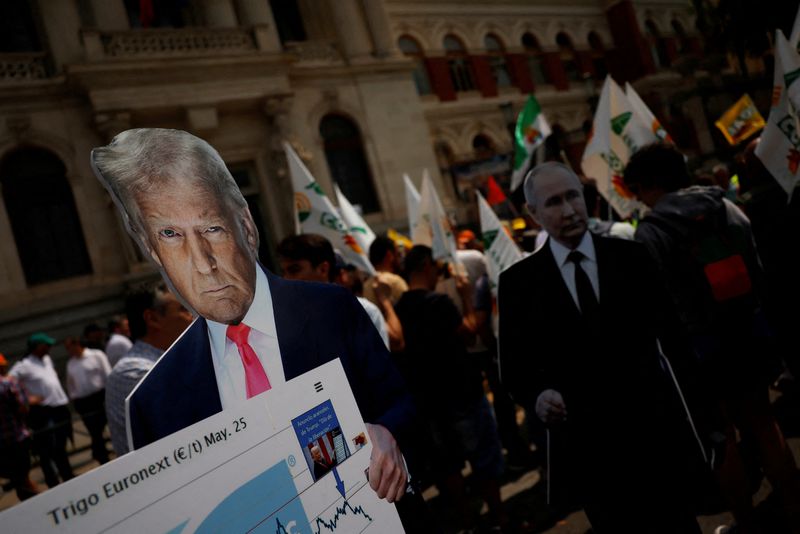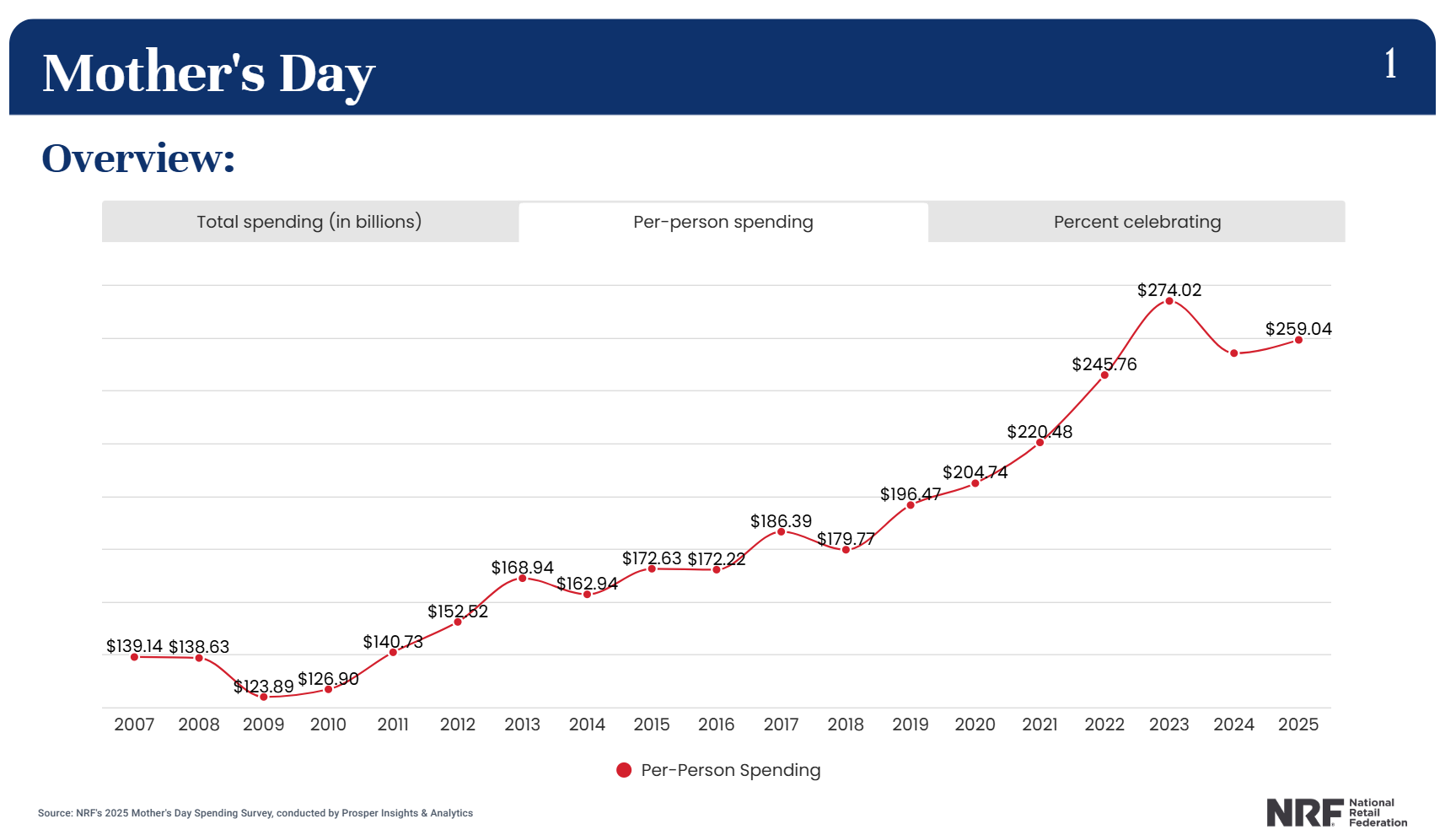Transcript: Tom Barkin, Richmond Federal Reserve President & CEO
The transcript from this week’s, MiB: Tom Barkin, Richmond Federal Reserve President & CEO, is below. You can stream and download our full conversation, including any podcast extras, on Apple Podcasts, Spotify, YouTube, and Bloomberg. All of our earlier podcasts on your favorite pod hosts can be found here. ~~~ 00:00:02 [Speaker Changed] Bloomberg… Read More The post Transcript: Tom Barkin, Richmond Federal Reserve President & CEO appeared first on The Big Picture.

The transcript from this week’s, MiB: Tom Barkin, Richmond Federal Reserve President & CEO, is below.
You can stream and download our full conversation, including any podcast extras, on Apple Podcasts, Spotify, YouTube, and Bloomberg. All of our earlier podcasts on your favorite pod hosts can be found here.
~~~
00:00:02 [Speaker Changed] Bloomberg Audio Studios, podcasts, radio News. This is Masters in business with Barry Riol on Bloomberg Radio
00:00:16 [Speaker Changed] This week on the podcast, another extra special guest, Richmond Federal Reserve President and CEO Tom Barkin. He’s been a member of the Richmond Fed since 2018. He is also on the Federal Open Markets committee and is responsible for a variety of Richmond Fed Tech technology and bank supervision. Previously, Tom had spent 30 years at McKinsey, where eventually he became chief risk Officer and then Chief Financial Officer. I found this conversation absolutely fascinating. He’s a super intelligent, thoughtful guy, very well versed in business economics and monetary policy. I think you will find this conversation to be both timely and fascinating. With no further ado, my conversation with FOMC committee member and president of the Richmond Federal Reserve Bank, Tom Barkin.
00:01:14 [Speaker Changed] Barry, thanks for having me here.
00:01:15 [Speaker Changed] What a perfect resume and a perfect person to talk about the state of the world today. Before we go there, let’s just dip into your background. You’re a triple threat, bachelor’s, MBA and jd, all from Harvard. What was the original career plan?
00:01:33 [Speaker Changed] Well, it wasn’t that I grew up in Tampa, went to a public school there, applied to a few southern schools and Harvard ’cause it had a good name and I thought it was sort of a neat idea. And then I got in, which was kind of a surprise. And when I went there I was gonna be a lawyer and I was gonna major in mathematics and I took my freshman year math and that all went great. And my sophomore year I ended up in a class called Basic Algebra one that was not basic and was not any algebra that I knew anything about. And it turned out that half of that class had been the US National Math team and they had all competed internationally and they knew stuff I didn’t. And I was at the time taking introductory to economics, which I really liked ’cause it combined history and politics and math and economics.
00:02:20 And so I, I moved my major into economics and had a great experience as an economics major. Undergrad, I was still gonna go to law school and I applied to law school and got in. But a bunch of my roommates were applying to business school. And it felt to me like that was a neat way to get a master’s in something related to economics that I was interested in. And so I applied also to business school and got into that and then started that program once into law school and business school. I was able to compare two sets of professions. One, the law and the second being going into business. And it just felt like the second was much more vibrant, much more interesting, learned a lot more. And so I made that transition. But I wouldn’t have made that transition if I hadn’t been an economics major. I wouldn’t have made that transition if I hadn’t applied to business school. I just wouldn’t have the confidence to do it.
00:03:06 [Speaker Changed] So I know Wharton has like a joint, CPA JD MBA program. Did you, were you enrolled as a full-time JD and a full-time MBA student at Harvard? Or were these, was this sort of a combined program?
00:03:19 [Speaker Changed] It is a combined program. You take a year at law school, a year at business school and two years combined. I didn’t realize there was a program where you could also get a CPA, maybe that would’ve been a third degree. Just for extra credit.
00:03:30 [Speaker Changed] I believe that’s Wharton. So you come out of Cambridge with three degrees. What’s the first first job you take?
00:03:39 [Speaker Changed] I went to work at McKinsey. I mean, I done
00:03:40 [Speaker Changed] Summer jobs. That was literally your first, yeah. So you go to work at McKinsey in 87 and you stay for 30 years.
00:03:47 [Speaker Changed] Yeah, and and I, I was lucky, lucky, lucky to go there. I, I joined an office that had about 25 people in Atlanta. It felt like an entrepreneurial opportunity to build something, made a lot of friends there, enjoyed the work, really enjoyed my clients, and the opportunity to help a bunch of great leaders improve the performance of their organizations. Fell in love with McKinsey people, smart, talented, idealistic. And the combination just worked great for me.
00:04:13 [Speaker Changed] You’ve held a number of roles there eventually becoming a senior partner, but the two that are most fascinating and relevant to your current situation is chief risk officer and Chief Financial Officer. Tell us a little bit about the career path to two very important roles at a very important company.
00:04:34 [Speaker Changed] Well, starting in 99, I started leading the Atlanta office, which eventually became the southern offices of McKinsey. So from Texas through Virginia, it was sort of our territory. And we had, I don’t remember the number, 60, 70, 80 partners plus another several hundred associates. And we were serving clients in that geography. So I’ll, I’ll point to that as a role that I really enjoyed. And one where I got to spend so much time with so many business people about what was happening in their business and, and opportunities for McKinsey to help. You know, we worked our way through nine 11. That was a very difficult time for our business. And I think coming out of it, the folks at McKinsey thought, you know, I knew how to manage a bottom line. And our office got through quite nicely. And when a new managing partner was named around the financial crisis, they asked me to be the CFO to help navigate McKinsey through that, which I’m very, you know, pleased with how well we navigated through that. I did that for six years and then spent three years trying to help institutionalize some risk processes at McKinsey, including a lot of the stuff that has been done to defend against cyber and in whatever role. And there are others that I’m not gonna bore you with. You know, the opportunity to try to take a partnership and influence it to become better is a challenge. And also a lot of fun,
00:05:52 [Speaker Changed] Huh? That, that sounds really interesting. So you’re at McKinsey for three decades. How do you end up on the Richmond Federal Reserve?
00:06:03 [Speaker Changed] First of all, I was very involved civically in Atlanta and in lots of different organizations. And at some point I met the president, the, my equivalent in Atlanta, who then was Dennis Lockhart, who’s a great guy. And Dennis at some point invited me to join his board from, so from oh nine to 14 I was on the board and then eventually the chair of the board of the Atlanta Fed and I stepped down term limited. And three years later I was in the process of leaving McKinsey. McKinsey is a mandatory retirement age. I’m very young in my own mind, but not that young at McKinsey. And I had signed the papers and agreed to retire, and I got a call from a headhunter suggesting that I interview for the Richmond job. And of course I called Dennis and asked if he thought this made sense.
00:06:48 And, you know, he encouraged me to do it. And so for me it just seemed like a great opportunity to, well, let me take a step back. I’ve really been impressed with the Atlanta Fed from oh nine to 14, and the Federal Reserve in general, navigating through the financial crisis, all the innovations that happened in the early 2010s. It reawakened an interest in economics that I’d had, you know, since being an undergrad. But I never thought that that’s a job I would do. It just didn’t occur to me until the combination of the headhunter and the, and Dennis encouraged me to do it, and then I interviewed and was offered the job.
00:07:22 [Speaker Changed] So maybe perhaps this is a touch of hindsight bias, but 30 years at McKinsey, cybersecurity Chief Risk Officer, chief Financial Officer, the dotcom implosion, September 11th, the financial crisis. Sounds like your tailor made to be sitting on the Fed that just never popped into your, into your mind. Like what was the moment that you said, oh, I, I have skills that seem to apply to this.
00:07:51 [Speaker Changed] You know, you described me as a very modest person. I’m not sure that’s true, but I, I’ll just say, I’ll just say that I was so impressed with the grounding and the experience of the people that make monetary policy, that it wouldn’t have occurred to me that, you know, I should go stick my hand up and do that. And, and even when you walk into the room of the FOMC, you’ve got 19 people there. They’re very impressive. Probably two thirds are academic economists. They’ve spent their entire career working and studying in that. And of course I had taken four years of economics, you know, 40 years, well, I guess 35 years earlier. And so I think it would’ve been, you know, pretty arrogant to imagine that that would’ve place that was natural for me. Now, you know, when I got into the process and started thinking about it, you know, I, I was able to articulate a model for how I thought I could add value to the room.
00:08:47 And I think, you know, if you’re performance oriented or even competitive, what you really wanna do is add value to whatever job you’ve got. And so, for that job, for this job, you know, I, I asked myself what could I do that would be valuable? And what I thought I can do and what I spend my days doing is trying to understand what’s actually happening on the ground with businesses, because that’s what I did for 30 years. I think that’s a differential skill within the FOMC because anyone can tell you they’re raising prices or lowering prices, but to understand why and how things are gonna play out and to spend enough time with people and feel comfortable enough with their businesses that you could understand the context that is behind whatever choices they’re making, I think that is a place where I can add real value. And I, I convinced myself that and, and I guess I convinced the board of that as well.
00:09:35 [Speaker Changed] You know, people often talk about how much they wish the government was run more like a business, and for better or worse, that doesn’t always apply, but it really feels like the Federal Reserve is sort of halfway between a private sector entity and a full governmental agency almost has a foot in each camp. Tell us how your private sector experience helped to drive fed policy and especially at the Richmond Fed, how it affects just the everyday operation of a large influential central bank like that regional central bank.
00:10:15 [Speaker Changed] Well, lemme start by saying, one of the things that was very attractive to me about the Federal Reserve when I got to know it in Atlanta was these banks are private sector entities, which means you have, you know, a value proposition to highly talented people who have freedom to, to work hard and do what they know is right. But in addition, you’ve got very mission oriented people, so very talented and very mission oriented. That’s a nice combination for, for something that’s working for the public interest. And so I I, I was, that was definitely an attraction to me. I’m not trying to mess that up. So I’m not coming in and saying, all right, now, you know, here’s what we’re gonna do because I was in the private sector, you know, I’m actually, I respect the institution and trying to figure out how to operate within it as opposed to disrupt it.
00:11:01 And so operationally, the Richmond fed overseas technology for the system and I oversee, saw technology in my old life. And so, you know, making sure we’re better and working better and delivering better. I think we’ve done a great job in that. I’m also chairing the committee that oversees payments within the Federal Reserve, which is the one business, the Federal Reserve runs and trying to make that a good and even better business. Those are, there are places I bring my business skills to bear talent management, all all of that stuff. In addition, as I said, I think, you know, being able to bring some insight, for example, on how businesses are gonna behave in the context of volatility and tariff announcements. That’s something that I think I can bring, you know, my, my business experience has a lot of benefit in the room and that’s, it’s good to just say that you bring that benefit, but I try to reinforce that by spending literally five days a week in the market talking to businesses throughout my district, trying to truly dig into what’s happening. I think that’s a place I can also add value.
00:12:04 [Speaker Changed] So you joined the Fed in 2018 and it was a very consequential seven years. Q4 of 2018 people were very nervous about a recession market dropped about 20% in the quarter, some of which was related to tariff induced slowdowns back then, 2020, obviously the pandemic once in a generation, maybe even once in a hundred years event 2022 first, not only is the fastest rate increase in modern memory, first time, I wanna say since 80, 81, 82 we’re both stocks and bonds down double digits. That was 2022 and then 2025, obviously all this volatility and sterman drang with, with tariffs. What is the biggest occupier of your mental bandwidth? Is it the day-to-day operations or is it all of these seemingly unprecedented disruptions that just turn the whole world upside down, whether it’s just a quarter like it was in in 2018 or a couple of years, like, like the pandemic?
00:13:14 [Speaker Changed] Well, so I joke sometimes I was on the board of the Atlanta Fed from oh nine to 15 and during that six year period, interest rates did not change once
00:13:23 [Speaker Changed] Nothing happened,
00:13:24 [Speaker Changed] Right. And, and look at where we’ve been here from, you know, raising it in 2018 to lowering it in 2019, to really lowering it in 2020, then to raising it again in 2022 and then lowering it again. So
00:13:34 [Speaker Changed] Are you saying it’s your fault since you joined the Fed, everything went upside. Now
00:13:38 [Speaker Changed] I’ll take whatever credit or fault you want. I, I would say the thing I’ve been reflecting on is the question of did we in our working careers just benefit from a period that with hindsight is an, was an unbelievably low volatility period. You know, the wall fell while there were conflicts globally, there weren’t very many. Nine 11 felt like a big deal at the time, but you know, Lehman Brothers was obviously a big deal. But it, but over a 30 year period it’s pretty calm. And you know, stat I like to throw out there is in the 2010s, inflation was between one and 2% every single cycle. We added jobs every month in the 2010s. GDP was in the very narrow range of sort of two to 3%. We just had a very stable long-term expansion with very low inflation. And that was a very friendly environment, you know, I’d say for policymakers, but maybe that vol, if you look at, you know, through the sands of time, that kind of stability is not what you should expect. And so we’ve had significant volatility. The pandemic obviously being an example, the inflation episode being another one. And maybe that’s gonna be more like reality.
00:14:47 [Speaker Changed] You know, it’s so funny you say that we, we did a study in house and and looked at the 15 year period from the financial crisis forward. So somewhere in the middle of last year was the third best 15 year rolling period on record. You’d have to look at the 15 years post World War II and then the 15 years up until late 99, which were 18 and 17% a year respectively. The 15 year period ending last year was 16% annually. And all anybody did was complain about, or at least a lot of market participants complained about the Fed, complained about deficits, complained about the economy each the single best decade and a half in modern era for asset prices. So in the face of that sort of, you know, criticism of the Fed and Carping about all sorts of policy, how do members of the FOMC, how do members of the Fed respond when the data says, Hey, things are pretty good, but the sentiment which continues to just get worse and worse says things are terrible.
00:15:55 [Speaker Changed] Well, I’d start, you know, to the people who complain, I’ll start by saying, we’re given a privilege by Congress, which is the, you know, ability and the independence to set monetary policy on behalf of the economy of this country. And we take that very seriously. I do think part of the trade there is that people on both sides get to critique what we do. And that just is what it is. And I think you just keep your head down and do the job you’ve been assigned and you don’t spend time, you know, worrying about the critiques. So that’s, that’s that part of it. In terms of uncertainty and volatility, I think it, in sentiment, it’s quite pronounced now. I think business sentiment and consumer sentiment’s different. I mean, business sentiment feels to me like very tied to outcomes. If businesses are highly uncertain, they’re not gonna invest, they’re not gonna hire, they’re gonna defer growth plans.
00:16:43 We saw that in 2019, as you referenced earlier. I think we’re seeing that right now. Certainly the businesses I’m talking to, I, I’ve described it as trying to drive through a really dense fog. It, it’s hard to put your foot on the gas ’cause you don’t know where the next cliff is. You don’t wanna put your foot on the brake ’cause you don’t know who’s behind you. And so the only rational strategy is to pull over and put on the hazards. And that’s what I hear businesses doing, which is pulling and pulling over the hazards, pulling over and putting on the hazards. Now it’s different on the consumer side. Historically consumer sentiment has been a leading indicator of consumer spending. But we didn’t see that two or three years ago when consumer sentiment got negative and consumer s got very negative again recently. I think the reason we haven’t seen that is inflation.
00:17:24 It, it turns out, I mean we all knew this in the seventies, but we’ve relearned it in the last three years. It turns out consumers really hate inflation. Now it doesn’t stop ’em from spending, you know, if your wages go up and your prices go up, you have the same spending capability, but you’re just much less happy. And that’s what we’ve seen. And I think today we’ll see if we have more inflation. But I think the kind of relentless noise about tariffs is leading people to think that that’s gonna lead to higher prices, which is leading people to be more negative about the expectations. And you can see that in the expectations, let’s say one year price expectations have elevated significantly and that’s what’s driving sentiment. But so far that doesn’t seem to be affecting spending on the consumer side. I think it, it does on the business side,
00:18:09 [Speaker Changed] Yeah, very much businesses have to plan much longer term. First of all, I love the foggy metaphor. Driving in the fog is really perfect. But you mentioned inflation expectations and I always wonder, does the Fed put too much emphasis on expectations? At least in the modern era, if we look at 20 21, 20 22, inflation expectations were at their lowest just as inflation spiked. And of course they were at their highest just as inflation peaked in 22 and began coming down. My experience with sentiment is it’s always backward looking. You ask people how they feel about anything, the markets, the economy, inflation, and they’re always telling you, here’s what the past six months have been like. Even if you say, what do you see going forward? How much, how significant, how important are inflation expectations to FOMC policy?
00:19:07 [Speaker Changed] Well I think the theory is very straightforward, which is that if inflation expectations long-term in particular stay anchored, then that means that, you know, businesses will quickly return even after inflationary episode to prior levels of, of price increases. I really believe in it. I mean, in my business experience, I think the expectations of what inflation would be absolutely governed how businesses behaved, both in terms of their pricing and their wage setting. You know, if you showed up at your retailer with a 8% price increase and inflation was 2%, they would say, why are you doing that? And if you didn’t have the world’s greatest reason, you weren’t even walking in the door. And so I I, I think I, I think the, the concept of inflation expectations is a very powerful concept. I really believe in it and I believe it’s what happens in, in the world.
00:19:59 What I don’t believe is that we have any good way to measure it. And so, you know, you talked about market-based inflation expectations, there’s a lot going on in those market-based expectations, including liquidity and a bunch of other things. You know, survey-based expectations. It turns out, you know, if you ask someone a survey question and you bias it in any way, then they end up with different biases and different surveys have different ways of managing that. And so I think it really matters, but I don’t think our metrics are very good. And my, my shorthand for whatever it’s worth is, I think there are two competing things in every business’s mind and every consumer’s mind about inflation. One is, what is it today? Because the best indicator of tomorrow is today. And the second is, do you trust the Fed will return it to 2% in the long term?
00:20:50 And it’s almost that simple of a question, do you trust? And as long as you trust the Fed in the long term and market expectations are a reasonable proxy for that, then I think what you should expect for near term inflation is some combination of today versus tomorrow. And you get there over time. And if, if you go back to the eighties and nineties after Volcker and through Greenspan, you know, we didn’t go to 2% inflation in 1986 or 87 or 88, we were at four and then we were at three and a half and then we were at three and then we were at two and a half. I think you get there over time, you don’t get there quite as quickly as sort of a purist model would suggest.
00:21:24 [Speaker Changed] So, so lemme get a little wonky with you since you brought up the 2% target. Former Federal Reserve vice chairman, Roger Ferguson, I believe did a paper on the 2% inflation target. And he was kind of critical of it saying it’s a made up round number that comes from New Zealand in the 1980s. It’s not relevant to a modern era versus it was, but, but to, to kind of flesh out his thoughts a little more. Hey, the post financial crisis period, really the post nine 11 period was driven in large part by very low monetary policy, very low rates. And then the pandemic led to the single biggest fiscal stimulus, at least as a percentage of GDP since World War ii. So we had that regime change from monetary to fiscal is 2% still the right target? We couldn’t get up to 2% during the 2010s where deflation was a bigger concern. Now we have the, okay, admittedly the pig is mostly through the python, but we still have all this fiscal stimulus around is 2%. Like why, why two, why not two and a half or three?
00:22:37 [Speaker Changed] So I, I would ask the first question is, is it a good idea to have a target? And I’d wanna make the case that it’s a really good idea to have a target because it anchors the public in terms of where you’re trying to go. And it builds commitment and credibility among the FOMC that you’ll take the initiatives you need to take when you’re absent from a target in terms of what should the target be. The original debate in the nineties was actually between zero and two. Zero was price stability. That’s price stability, right? And, and two was a, an alternative that gave you a little bit of room. Eventually they settled onto our predecessors and as you were suggesting, pretty much every central bank in the world has settled on two. And by the way, we’ve delivered two or just around two for almost all of the last 30 years.
00:23:22 And so it doesn’t strike me that it’s a ridiculous target, it’s an achievable target, it’s a global target. It makes sense to people. By the way, you know, we’re at 2.3% I think headline right now, so we’re not even very far away from it. So I, I see no reason to move the target. Of course you could argue about whether two’s the right number, 2.2 or 1.8 or some other number. I’ll say two things about that. One is one of the reasons why you go with two as opposed to zero is you don’t like deflation. Deflation is when prices go down every year and then no one wants to buy anything ’cause it’s gonna be cheaper tomorrow. And two gives you a little bit of room against deflation. It’s also the case that there’s some mismeasurement, take encyclopedias for example, let’s assume encyclopedias were in the, the index in the nineties.
00:24:07 Well they’re free today, they’re on your phone. And so that’s deflation that doesn’t show up in the numbers and so it just gives you a little bit of room there. So that’s why two, you know, you sort of said we’re not at two today, we weren’t at two a decade ago. And I, I think I personally do think of false precision as being a concept worth considering here, which is, I I definitely didn’t criticize myself that much when we were at 1.8. I mean, you’re trying to get to two, the economy is not something that you manage so finely that in each and every month of each and every year, inflation comes in in exactly two. That’s something that doesn’t exist. Two’s a target. And if you’re off to on the above or on the below, you try to manage yourself toward it and you recognize that you’re not always gonna be right on it.
00:24:48 [Speaker Changed] Right. It reminds me of the old joke. Economists use decimal points to reveal, they have a sense of humor, so Right,
00:24:55 [Speaker Changed] Right. Something has to, something has to make that case.
00:24:58 [Speaker Changed] So, so let’s pivot a little bit to, to the Richmond Federal Reserve. The, the Federal Reserve Bank of Richmond District covers South Carolina, North Carolina, Virginia, dc, West Virginia, and Maryland. That seems like a fairly unique group of states, especially with the nation’s capital right in the middle. Tell us a little bit about what makes that region so special.
00:25:25 [Speaker Changed] So three things I like about it. One is DC Metro unique, there’s no other place in the country like that obviously, and all that’s implied there. Second is we have nine or 10, I’ll call ’em really fast growth New South regions, communities, cities, Charlotte, Greenville, Raleigh, Richmond, you know, you put Northern Virginia, they’re really very, very vibrant and fast growing. You know, north and South Carolina, for example are two of the four fastest growing states in terms of population, in terms of housing growth over the last several years. And then you’ve got a lot of rural markets and, and that would be, you know, west the Appalachian part of the district in North Carolina, West Virginia and Western Virginia. But that would also include up and down, you know, I 95, there are a lot of small towns there. And so I kind of think about it as three different economies and I think it’s very interesting to be able to represent a community with three so very different economies.
00:26:27 [Speaker Changed] You know, you mentioned Charlotte. My office has, you know, we have dozens of offices across the country, but we have three hubs, New York, Chicago, and Charlotte. And every time I visit Charlotte, it feels like the city is twice the size. It was a year earlier. The, the area, it’s become a finance center and a banking center. How, how do you look at such a diverse area where some parts are a little more rural, a little more sleepy, and growth is just normal agricultural progression and other areas are just absolute boom towns?
00:27:03 [Speaker Changed] Well the biggest thing I try to do is show up in all of them. And so as you go, you
00:27:06 [Speaker Changed] Go to a lot of parts of, of your district all the time, right? Ev
00:27:10 [Speaker Changed] Everywhere. And if you’re, you know, bored on the website, they’ve even got a map kind of a where’s Waldo. But no, every, I mean last week I was in Marion and Roanoke, Virginia, then I was in Arlington, Virginia, then I was in DC and I’m trying to get into the big cities and the small towns because you actually do hear about the economy differently in big cities versus small towns. For example, labor markets, you know, the, the labor markets in the small towns are unbelievably stressed still. And if you have a national conversation, you say, hey, the labor market’s sort of imbalance, unemployment’s 4.2% wage growth, sort of moderate. It’s still the case in these small towns that they can’t find workers at restaurants. And certainly in in manufacturing facilities you also hear, you know, you, you get a lot easier access to small businesses when you’re in the small.
00:27:57 So when I was in Marion last week, I actually spent an hour and a half just wandering up and down Main Street and I talked to every small business on Main Street about, you know, what does demand look like? Are you seeing any impact from tariffs? What are you gonna do with your pricing? So it’s a forcing device to help you see that part of the economy, which of course employs so many. And so I, I think if, if you’re on the ground, you’ll see, and I’ve got red parts and blue parts and purple parts of the districts. You, you hear what’s on people’s minds in very different ways based on, based on where you are. And, and I really appreciate that part of my district.
00:28:29 [Speaker Changed] How do you balance the anecdotes you hear from the man or woman in the street, the business owner, the shopkeeper, whatever, with the hard data that, that, you know, both the Richmond Fed and the Federal Reserve proper have an enormous staff of researchers crunching numbers. How do you, how do you balance data versus anecdote? Well,
00:28:51 [Speaker Changed] So the data’s better than the anecdotes because you know, it’s a bigger sample. It’s done in a, a serious and appro statistically appropriate way. It also comes in about six weeks late and is revised three times. And so the data really matters, but if you just count on the data, you’re gonna miss turning points and you’re gonna miss explanations. And so I don’t make the mistake of talking to one company and saying, oh, okay, everything in the data’s wrong. But I do try to understand what the data’s telling me by testing, you know, with the, the conversations we’re having in the field. And so, you know, a good example would’ve been May 1st, 2020 when I talked to a real estate developer in Western Virginia who was telling me that Tennessee has just opened the malls in Bristol and they’re packed. And of course Virginia was still closed down and that was my first indicator that you’re gonna see this big wave of spending when the lockdowns started to, to to open up.
00:29:46 And so that’s a turning point that you wouldn’t otherwise have gotten if you weren’t in the markets. We heard the same thing with household furnishings. You know, there’s a big boom in furniture during COVID, but about 2022 it backed off. We heard that from the furniture manufacturers well before you saw that in the data. And then I think explanations matter a lot too. And if you’re trying to understand how it could be that we’ve had all this news from Washington, yet the unemployment statistics don’t seem to show that much of a tick up in unemployment in Washington. Well there are lots of explanations including how those programs have been rolled out and what the timing of it is. And, and so if you’re in the market talking about, we actually understand the data in, in a fundamentally more sophisticated way,
00:30:28 [Speaker Changed] Since you mentioned the pandemic, let, let’s talk about two issues post pandemic wages and real estate. And we’ll just start with there have been substantial wage gains across every economic strata and, and impressively very much so in the bottom half of of earners since the pandemic, although that is now starting to slow down, how do you look at the wage situation as part of employment and what’s happening with that trend towards wage pressures beginning to ease off? Well
00:31:04 [Speaker Changed] I do think you’ve described accurately, you know, what’s happened to wages, it’s definitely bigger increases at the lower end and less at the higher end. You know, I should add that inflation also hits lower income earners the hardest because they spend the greatest amount of their pay. And so nobody has this mental ledger that says my wages went up X percent and my prices went up Y percent. And so I’m, you know, it’s not like operating margin for a business. Those are two different ledgers and humans minds. And so to a lot of lower income people, it doesn’t feel like their wages have gone up as much because inflation’s gone up and also because they don’t, they discount the wages when they measured against inflation. You know, going forward it definitely looks like we’ve got a labor market that is much more in balance, maybe even starting to loosen than the one we had a year or two or or three years ago.
00:31:50 You still hear tightness, as I said, in small towns. You definitely hear it in skilled trades. I think there are a set of professions out there that used to be a wash with employees that now seem to be systemically short of employees. And you know, a lot of that’s skilled trades. But I’d also put a lot of the care professions, nurses, teachers, elder care, childcare, a lot of people found those professions to be pretty unattractive during COVID and moved into other jobs. And there hasn’t been a way, you know, to replace ’em and that and there’s not that much money to increase available to increase the compensation to account for it. So you hear shortages there, you hear shortages in state and local government still. So there, there’s still places where the impact of the pandemic on the labor market has not yet. We’re not back to where we were at the beginning and you know, know some combination of training and development of people and compensation of people is gonna have to happen if we’re gonna staff these appropriately.
00:32:46 [Speaker Changed] So let’s talk about remote work and both commercial real estate space and residential real estate. The US continues to have a substantial number of workers that are either hybrid or full-time remote. I used to be in the city four or five days a week, now I’m in the city two or three days a week. If you were in Bloomberg today, I would’ve been in Bloomberg. But it didn’t make sense to come in to have a remote conversation. And the US continues to have a higher level of remote work than other. Similar in industrialized societies like like Europe. What’s going on with remote work, what does this mean for fed policy? What does this mean for a variety of different aspects? It seems to be fading as a topic, but it’s still a pretty significant issue.
00:33:40 [Speaker Changed] We have flexibility we didn’t know we had, that’s where it started and you can’t, you can’t bury that. And so I think there’s a whole bunch of workers and a whole bunch of days who found out that like you and like me, you could work from home this day as opposed to working somewhere else. It’s also true that there’s a bunch of employees who discovered that they actually prefer to be at home rather than come into the office. By the way, there’s another set that would prefer to come in the office, but there’s certainly a segment there. And so we’re in a marketplace, people will compete it out and there are executives who believe passionately that their business is not going to deliver unless their people are there five days a week every week. And there are businesses who believe they’ll get access to better people if they just allow ’em to be remote.
00:34:26 And those two, often those two are in the same sector and so they’ll compete it out. One will have lower property costs, one will have higher collaboration. We’ll see, we’ll see what happens. One thing I tried to look at when all this started was how did we ever end up with the five hour, five day a week, 40 hour work week? And the answer is that was General Motors and Alfred Sloan back in the mid twenties just decided it and five or 10 years later everybody was doing it. But none of us who were doing it thought that was perfect if we stopped to think about it. It’s just what we did. And so, you know, different sectors, different businesses, they’ll evolve toward different models. I do think their implications, as you say on on real estate on the residential side, if some set of people are gonna spend more of their time in their house, then they’re gonna value their house more, they’re gonna value their office, they’re gonna value their space, their garden, whatever.
00:35:16 And so, and we saw that during COVID, people got shut up in their house. They decided they no longer like their house. They also decided they didn’t like their roommates. They, so the economists call that household formation. So you have a lot more households out there for the same amount of houses. And that’s what’s led to the price increase that we’ve had in housing. And unless we build a lot more housing, you’re gonna have that out there for some time. It’s a bigger part of the basket and maybe, you know, public transit or parking is a lower part of the basket, but housing will be a bigger part of the basket on the commercial real estate side. You know, folks are still trying to adapt and you know, it’s much less flexible than the housing side ’cause some of the space is very much built for purpose built for an institution at least for 15 years as you know. And so I think we’re still midway through an adjustment process where some amount of that commercial real estate is used more because people come back to the office. Some is redeployed into other uses, whether it be, you know, anything from data centers to residential and some has eventually taken off the market. But I, I think, I think we’re still very much mid-process on that.
00:36:19 [Speaker Changed] So let’s talk a little bit about real estate and and particular residential real estate. We seem to have this chicken and egg problem where prices are up because there’s so little supply on the market. And while some of that is a little bit of NIMBY and some of that has been post-financial crisis builders tilted towards multifamily and apartments versus single family homes. But the largest chunks seems to be the golden mortgage handcuffs. Something like 60, 70% of people have mortgages under 5% and some huge crazy number under 4% mortgage rates. So on the one hand, if we lower infl or yields too fast, well that could set off another round of inflation. On the other hand, all of this supply is locked up and either we’re gonna wait for those people to age out or if rates come down enough they could trade up or trade to a downsize or whatever, but move to a different property. How does the Fed think about this? You know, sort of conundrum where damned if you do, damned if you don’t. Well
00:37:32 [Speaker Changed] I, I I think I wouldn’t, I wouldn’t buy, I do buy your story that there are a lot of people who have decided not to move ’cause they can’t give up their mortgage. But I don’t buy the story that if all we did was lower rates then they would all give up their mortgage and the housing market would free up because every one of those people who moved is a seller and a buyer. And so they’re gonna be increasing their demand at the same time that they’re increasing supply. So you’re still gonna have a shortage of supply versus demand. I should also note that just ’cause we raise lower short-term rates doesn’t necessarily lower mortgage rates as we learned in the fourth quarter of last year. But, but, but I think it, again, the demand for housing is much higher and it’s much higher because the generations decided they want a house and household formation as I talked about earlier, and people valuing their house.
00:38:19 As you say, we underbuilt housing for a generation coming out of the great recession and so we have more demand than supply. The answer to that is to build more supply. And as in my district, I, if you drive down 95 and you look at Wilson or Smithfield or Clayton or Rocky Mount, you know these are exurban areas that are not Raleigh but not that far from Raleigh. You see, you know, development after development of 275 to $325,000 houses, you know, going up in what used to be farmland there. If you drive to Exurban Charlotte or Greenville or Richmond, you’ll see the same thing. I mean houses are getting built but there are communities, you know, metro DC would be one of ’em where you don’t see housing getting built. And so, you know, you have to ask the question of why that is part of it’s cost, part of it’s land and and part of it’s, you know, resistance to growth by the inhabitants of various markets. And it again, one of the benefits of having the six states that have is you can see places that are growing and housing’s getting built and you can see places where it’s not.
00:39:22 [Speaker Changed] So is it fair to say the, the headwind for putting up more houses is not a national set of policies, but mostly state, local, regional, both regulations and just hey, you know, they, the fewer houses that are built, the more my house is worth. There’s a little bit of self-interest amongst the people who oppose more home construction.
00:39:49 [Speaker Changed] Well what I keep saying is we’re in a competition for developers. There are only so many, there are only so many construction people and you want them to come to your neighborhood and build houses and your places. So how do you do that? Well, all of your local regulation and policies matter, permitting, zoning, you know, amount of time to, to get approvals certainty as to construction time. So that’s one big piece of it. Another big piece of it is land availability and, and once you start thinking about land availability, you almost don’t stop. I mean I drive into some community colleges and they’ve got huge plots of land and then I find out that the state doesn’t allow the building of dorms on community college campuses. And you go now, okay wait a second, you can get student housing built, why can’t we get that built? You go to some of these older rural towns that have been depopulated over the years and they’ve got all this land that’s d dilapidated housing, but they can’t fix it ’cause there’s absentee landowners. I mean, once you start thinking about the role of land in making this attractive for developers, you almost can’t stop thinking about it. And I think that really is the lever. If communities can, you know, provide real assurance that they can provide land and that land can get built on at a predictable and reasonable time period, I think then it works.
00:41:01 [Speaker Changed] Hmm, really, really interesting. So now let’s pivot to your work on the FOMC and, and the state of monetary policy today. Starting with, let’s talk a little bit about that fiscal stimulus during COVID. If, if you total all the programs up cares, act one and two under president Trump Cares Act three under President Biden, all the infrastructure bill, all the other 10 year legislative acts that passed some form of fiscal stimulus, you know, you could get that up to about $4 trillion or more. That’s a huge, huge amount of, of money coursing through the system. How did that impact inflation and and is it fair to say that maybe transitory has gotten a bad rap? ’cause it seemed to be kind of transitory, it just transitory took longer than everybody expected.
00:41:58 [Speaker Changed] Well though there’s been a lot of papers written about what drove the inflation. You know, to me it’s an all of the above. I mean, you had a surge in demand that came from fiscal policy and monetary policy and vaccines, you know, as people got out of their house and felt the freedom to spend, you had constraints in supply, which came from, you know, labor constraints. People driven by the, the crisis, by the health crisis, maybe labor constraints caused by policy and supply chain constraints as demands sort of overwhelm supply. And so then you saw, you know, demand surge well in excess of supply that led prices up. I think the most interesting question for monetary policy is why did it last so long? Because, you know, to your point on transitory, okay, that’s fine. You have more demand than supply expectations are anchored. So price went up, they should have come back down.
00:42:48 And, and I just think it goes back to what I described earlier is how I think about people’s inflation expectations, which is it’s part today and part tomorrow and it just takes time to get back to tomorrow after you’ve had a surge today the, the real life way to think about it is, okay, now you’re, you know, somebody’s lawn service and you don’t really have big cost increases, but everybody else has raised their price. Maybe you look around and you go, huh, maybe I can raise my price. And so there’s a lot of attempts to raise prices that go through in the aftermath of an inflationary episode that might not have been, they might not have the courage to do without an inflationary episode. And so I I think it was this, the inflation wave that we saw was definitely time bound. I mean, we have seen the supply chains heal. We have seen people back in the workforce and we have seen prices come down. But the question of what the definition of transitory is is challenging because the word first got used I think in March 21 or April 21, and now it’s four years later. And so a lot of people think transitory means like a minute where in fact the original meaning of it was in our lifetimes. And so probably the right definition is somewhere between those two
00:43:58 [Speaker Changed] On a long enough timeline. Everything is transitory. Exactly. You have a quote from earlier this year that I’m a big fan of because I have a buddy who’s a commodities trader and he says the exact same thing all the time. And the quote is, the cure for high prices is high prices. Explain that because I’m just such a fan of that, that line.
00:44:20 [Speaker Changed] Well so it it’s a, it’s a great economist line. It it has two meanings and both of ’em matter. One is that if you as a consumer get high prices, the first thing you wanna do is look for an alternative. Maybe you go to private label, maybe you go to from beef to chicken. Maybe you go from a department store to a Walmart, but you’re looking for some are alternative. And so if a company raises its prices too high, then its customers are gonna do something else and that’ll teach the company that that price is too high. The other version of it is a supply side point, which is that if prices are high and successfully passed on, then new competitors will come in, you know, to either increase capacity or lower prices. And so, and and, and I really wanna say this has happened.
00:45:05 I mean this has happened in, in this economy. If you look at earnings reports from all the major retailers, you know, you’ll hear this, you know, customers are tapped out, customers are trading down. You can see a big move in terms of where people are buying their groceries today. Private label, e-commerce, like I said, beef to chicken, all these things are happening. And I think it’s because, you know, consumers having gotten through the COVID period where they were exhausted, it was all coming at once. And by the way, they had lots of money because of repressed spendings during COVID or elevated stock market or stimulus checks. They just spent it and they paid it. And that’s what we got the inflation in 2022. We’re not in a period where consumers feel like they have extra money. And so those people who are out there trying to raise prices for whatever set of good or bad reasons they’re facing a consumer that doesn’t want to pay it now and has got the time and the mental energy to make choices. And I, and so I think, you know, that does, that will fix high prices over time. So
00:46:01 [Speaker Changed] During the pandemic we kind of pivoted from a service driven economy to very much a stuck at home, can’t travel, go to restaurants, go to sporting events, so we’re going to consume more goods. That very much was a key driver of inflation along with all these other issues including snarled, supply chains, feels like that’s mostly return back to normal. The summer of revenge travel, everybody seems to be out and about, at least in my area. I I book restaurant reservations three weeks in advance. So we seem to be in a place that’s kind of normalized. How is the FOMC looking at the state of the economy today? Are we in a normal post inflation environment or is there something else that we going on that we should be aware of?
00:46:54 [Speaker Changed] Well, I think there’s, today and tomorrow, today we’re in the closing stages of bringing the economy back to normal. That’s how I’d put it. I mean, unemployment’s 4.2, that’s a historically low number inflation headline, 2.3 that’s very close to a 2% target gp, if you adjust for the one timers that we’re in the first quarter is still growing in the 2.5% range. So think of it as a, a very strong, stable economy. The the challenge we all have is the uncertainty about, you know, where we’re headed and you know, you or I could articulate a upside to that or a downside to that. I’m not making a comment on it, but it is elevated uncertainty. It’s what I was describing as the fog. And so, you know, we’re sort of on the brink of a different environment and that different environment, we’ll have different tariff rates and different levels of immigration and different levels of government spending and different levels of regulation and different energy policy y you know, all that is, I I think locked in. I mean we know the direction, we just dunno the destination. And it turns out people kind of wanna know where they’re headed before they pack. And so that’s, that’s the challenge we’ve got right now is just determining what’s the destination so that you know, businesses and consumers can make the choices they make.
00:48:11 [Speaker Changed] So given this fog driven in large part by uncertainty over tariffs, how does the FOMC make policy if there’s such a lack of clarity as to we understand today, but really tariffs are on, tariffs are off. Wait, European tariffs, oh wait, we’re gonna put ’em on hold until mid July. That must be incredibly challenging to make long-term policy decisions in light of these very short term policy swings.
00:48:44 [Speaker Changed] I’d say sometimes our job is very straightforward and sometimes it’s not. It’s very straightforward when unemployment’s high and inflation’s low ’cause you know which direction to go and it’s, you know, relatively straightforward when the forecast seems pretty clear that you have stability and confidence in the forecast. You know, in today’s world, neither one of those is true. I mean, inflation has come down but is not yet at our target employment. Unemployment is low, but you know, there risk to it and the forecast is unclear. And so you have to reflect on where you are. You know, where I think we are is modestly restrictive. In other words, a 4.3% overnight rate is constrained the economy. A modest amount, but not a significant amount at a time where inflation is still over our target and unemployment is low. And then you just have to, I, I mean you could choose if you had conviction in the forecast, then you might choose to move whichever way you felt you had to move given that forecast. But if like me, you don’t have that much conviction in the forecast, then you say, let’s wait and see where we go.
00:49:44 [Speaker Changed] So let’s talk about conviction. Another quote of yours that I’m fond of is monetary policy. And I’m gonna paraphrase, monetary policy needs to balance both conviction and humility. Discuss,
00:49:59 [Speaker Changed] Well, my dad said, used to say, Tom, I I want you to be humble because I know you well and you have a lot to be humble about.
00:50:06 And I think the point he was making is, don’t be too full of yourself here. And so you could, you know, stand up, pound the table and say, you know, by God I see where this is going and inflation’s rising or unemployment’s rising and therefore we need to move, you know, left or move right in support of one of those parts of our mandate. I mean, I listen to my colleagues who have many different points of view on this. I’m humble enough about my own forecasting ability. It just makes me think that, you know, I’ll learn more, I’ll learn more with time.
00:50:39 [Speaker Changed] So talking about your colleagues and, and the rest of the folks on the FOMC board, one of the things I’ve noticed through history is that they are very deliberate. They don’t surprise the markets with anything. Everything is always very calculated. And hey, we’re gonna be raising rates in a few months. Hey, next month look at the dot plot. We’re looking at PCE and CPI. Okay, here it comes. There are never shocks to the market. At the same time, the criticism has been, seems to be a little late to the party sometimes. We saw that spike of inflation late 2020, early 21. It took the fed a while before they began raising rates. And then CPI peaked June, 2022, took a while before we went on to pause and then cutting. How do you balance the lack of clarity, the need for humility with the latest da noisy data and trying to be not too far behind what you’re actually is happening on the ground?
00:51:50 [Speaker Changed] Well, so you started with, you know, being methodical and that’s probably accurate. Bernanke had the insight, which he published back in the early two thousands, that markets can do a lot of work for us. If they have a good sense of the path, then we don’t have to do as much in policy because they’ll, you know, work the rate path for you. And I think there is some effort made to try to communicate clearly, certainly why, you know, I and my peers try to talk as much as we do to see if we can’t, you know, bring some clarity to that situation. And so I think it’s fair to say, you know, trying to do it, but we will move faster than people expect when we need to as we proved in 2022 in terms of getting it right. I’ll just go back to what I said about false precision a little bit ago, which is I think we’re always gonna be wrong. I, I mean, you know, you’re never gonna precisely, you know, get the peak of inflation or the peak of unemployment or the trough of either you make your best efforts. And I think if the standard is that, you know, every decimal on every forecast actually played out, then I think we’re all guilty of, of missing that.
00:52:55 [Speaker Changed] Yeah. To say, say the very least. We talked earlier about transitory. Let, let’s talk for a moment about the 1970s, which was clearly very structural. How similar are the 2020s to the 1970s, and how different are they? As someone who was a kid during that era, I kind of remember just being parents, being freaked out about stuff. I remember going to get gas, I had a little side business mowing lawns, and the guy at the gas station asked me, are you, do you have an even license plate or an odd license plate? I don’t know. I’m 12, I just need a gallon of gas to mow the lawn. Yeah. So how, how similar is, is are the 2020s and what are the key differences? So
00:53:40 [Speaker Changed] There’s a chart that makes the rounds that, you know, adjust the scales, but sort of puts the sixties and seventies up against, you know, the last five years and says there’s just about to be another big bout of inflation. And, and you know, I find that chart annoying, but you know, I understand the fear. You know, a reminder for all your listeners that in the early seventies there’s a strong historic sense that there was a set of mistakes made by the Fed of not being tough enough on inflation that were then exacerbated in the middle and late seventies by two big oil spike price spikes. And, you know, I can’t predict an oil price spike and neither can anybody else. And so who knows, you know, how that’ll play out. The fact that I’ve found interesting about the seventies is how elevated long-term bond rates were and how high the term premium was, and basically how much inflation expectations were embedded in long-term rates.
00:54:36 And that’s an interesting thing to look at because it sort of gets to this question of expectations that we had price shocks, like the oil price spike in 74 or the one in 78, and who knows whether we’ll have those again. But those price shocks didn’t just affect today’s prices, it also affected the market’s views on tomorrow’s prices. And I say, I would just say that’s a huge difference between the seventies and today’s, that, you know, metrics of long- term expectations feel, you know, very grounded, even if you do have short-term price spikes. I think that’s because of an expectation that the Fed will do what we need to do. If you were to see that inflation, which I hope we validated in 2022,
00:55:16 [Speaker Changed] So it seems like the Street, wall Street in particular, the Wall Street and the bond market in particular have been erroneously forecasting fed rate cuts for, I don’t know, two, three, maybe even almost back to when the Fed started raising rates this cycle. What is the Fed looking for in order to feel comfortable? Okay, we’ve, we’ve wrestled inflation into submission and the economy is starting to show a little signs of some minor stress. Let’s, let’s take rates down one or two more times. I’m not asking you for a date, I’m asking you for, what are you looking at? What is the FOMC looking at that would make them comfortable saying, all right, we could, we could ease a little bit off the break and, and tap the accelerator a little bit.
00:56:07 [Speaker Changed] Okay, so first of all, I wouldn’t be so tough on the professional forecasters. Another joke is that, you know, economic forecasting was created to make weather forecasting look good. I,
00:56:17 [Speaker Changed] I think we’ve done that. I heard it to make, to make astrologists look good, but another good one, either another one, and actually the weather forecasters are getting better and better. That’s the difference
00:56:26 [Speaker Changed] As are the economics. But whenever, whenever you look at the market, quote unquote market’s view on the number of rate cuts, you have to remember that in that assessment includes tail risks. And so, you know, if you think at any given point in time there’s a 20 or 25% of a recession, at which point the Fed might re you know, respond, then that’s embedded in that. So when the, you know, the, the SEP forecast has two rate cuts, let’s say, and the market has three. I’m not sure I view that as a difference. I just think one’s got, one’s a modal and one’s a weighted average. And I, I think those aren’t the same things just in defensive economic forecasters.
00:57:06 [Speaker Changed] But if we look, you know, look at 23, 24, 25, no,
00:57:10 [Speaker Changed] Sometimes they’re different. Sometimes they’re different 00:57:13 [Speaker Changed] And wildly different.
00:57:14 [Speaker Changed] I was gonna say, in terms of your other question, what would I want to see? You’d wanna see inflation sustainably under control or you’d wanna see, you know, the economy, you know, tipping to a level that, that amount of downturn would have an impact on inflation and bring it under control. And so, you know, you can get inflation under control through rates and you can get it through economic, you prefer to do it through rates, but we’ll see.
00:57:36 [Speaker Changed] And I only have you for another two minutes, so let me throw you a curve ball question. Okay. I was just out in La Jolla on Tory Pines. I know you are an avid golfer in your Federal Reserve district. What are some of your favorite courses? You used to be on the USGA board, I’m assuming you still play. Where do you like to play in? What’s your home course?
00:58:00 [Speaker Changed] I play Kid Lock in Richmond and we have a place in Paul’s Island where I play the Deba Duke Club, which is a Pete Die course down there. And thank you for mentioning, you know, golf, golf is a lot like monetary policy and that I wish I were better at both of them.
00:58:16 [Speaker Changed] Well, that’s the perfect quote on which to end this. Thank you, Tom for being so generous with your time. We have been speaking with Tom Barkin. He is president and CEO of the Richmond Federal Reserve Bank, as well as a member of the federal Open Market committee that helps set federal reserve rates. If you enjoy this conversation well be sure and check out any of the 546 we’ve done since 2013. You can find those at Bloomberg, iTunes, Spotify, YouTube, wherever you find your favorite podcasts. I would be remiss if I not thank the crack team that helps me put these conversations together. My audio engineer is Steve Gonzalez. Anna Luke is my producer, Sean Russo is my researcher. Sage Bauman is the head of podcasts at Bloomberg. Be sure and check out my new book, how Not to Invest the ideas, numbers, and Behaviors that destroys Wealth and how to avoid them wherever you buy your favorite audio, e and hardcover books. I’m Barry Riol. You’ve been listening to Masters in Business on Bloomberg Radio.
~~~
The post Transcript: Tom Barkin, Richmond Federal Reserve President & CEO appeared first on The Big Picture.
